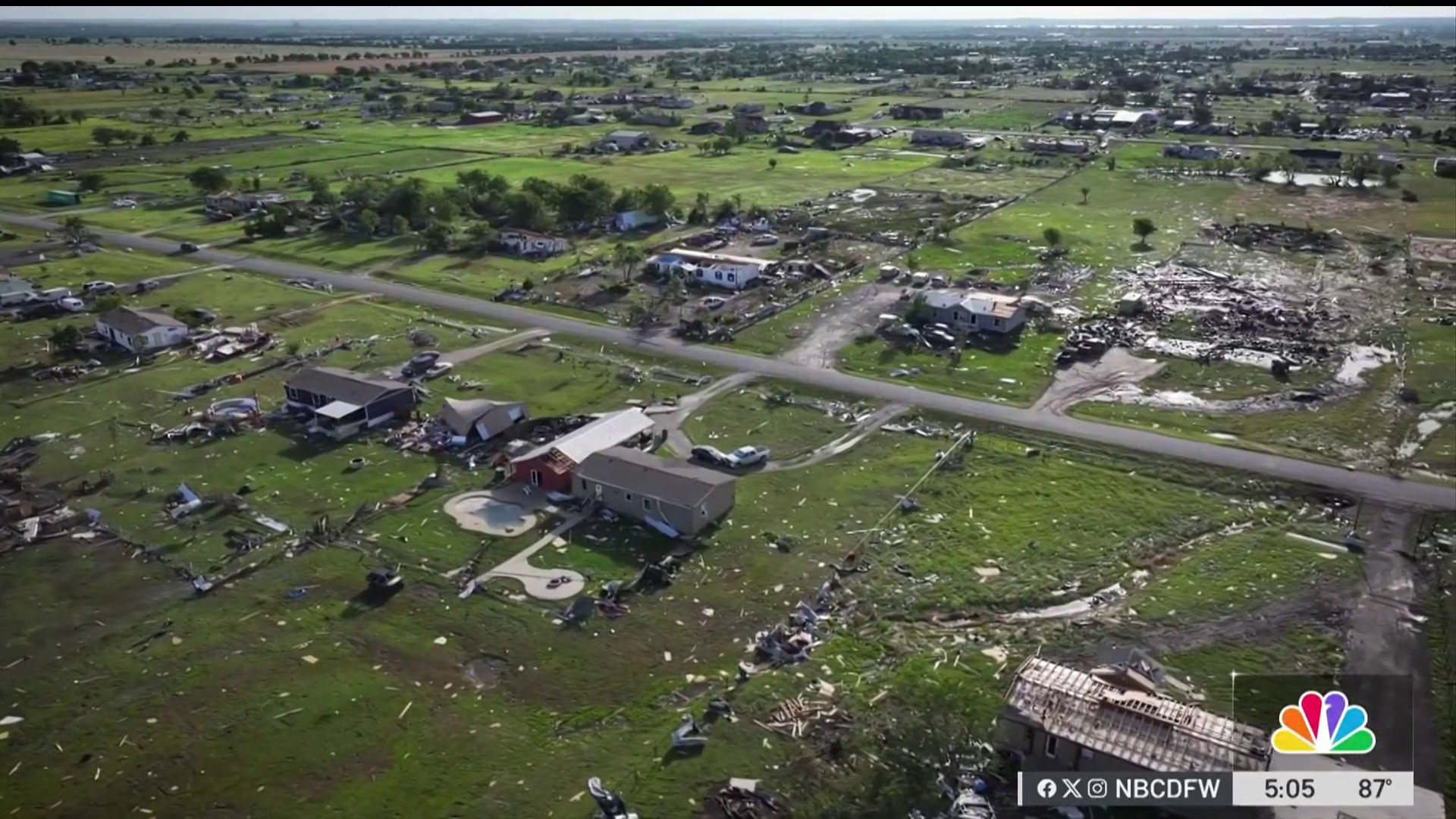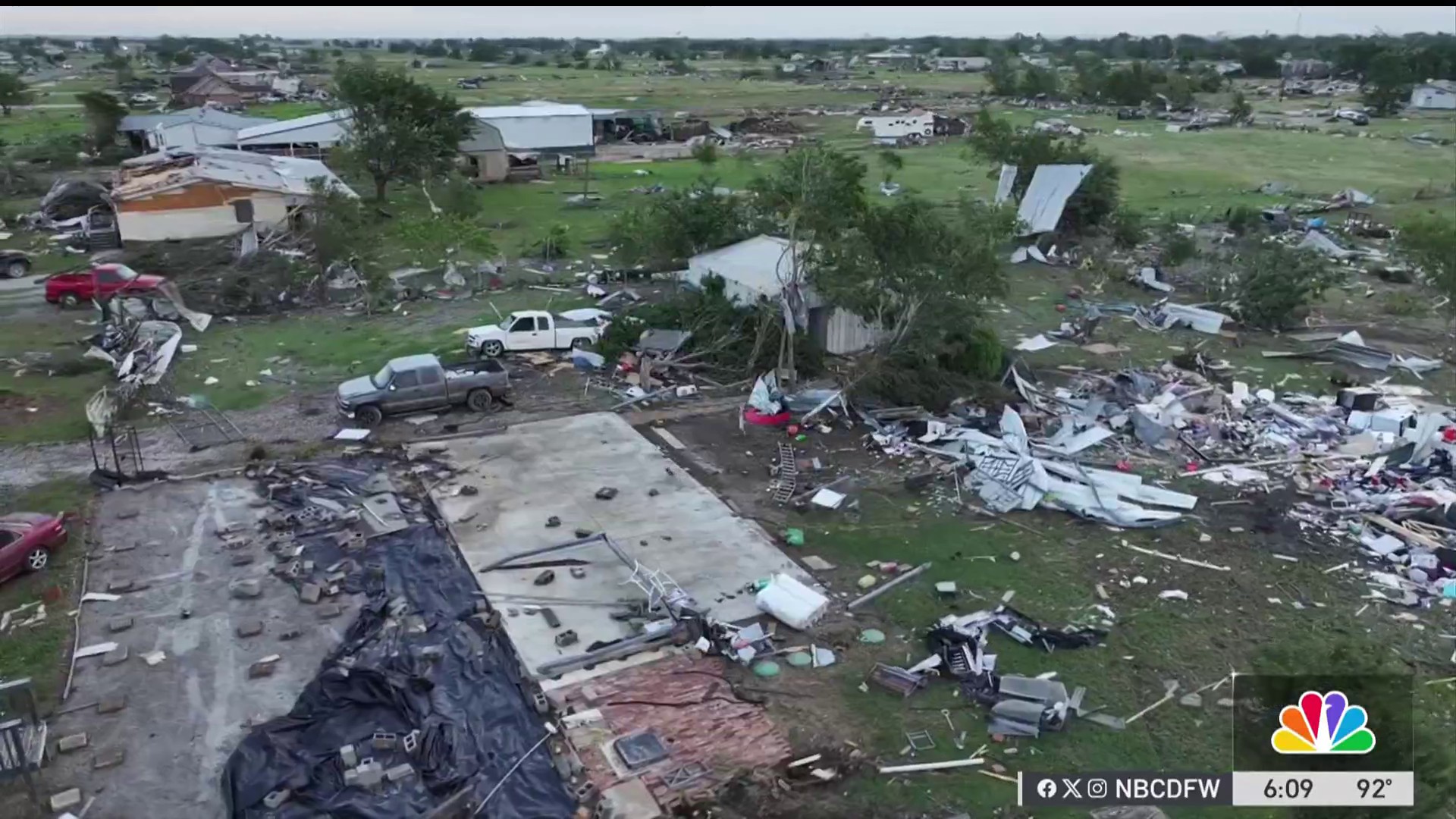If recent storms have you thinking about emergency backup power for your home, there are a lot of options to consider beyond extension cords plugged into a portable generator outside.
There are other choices from budget-friendly to top-of-the-line. Some use a mid-size or large portable generator combined with a transfer switch or interlock device to fuel the essentials in a home. There are other systems that can power a whole house.
Read on for questions to consider and expert advice.
BUDGET-FRIENDLY PLAN
Get top local stories in DFW delivered to you every morning. Sign up for NBC DFW's News Headlines newsletter.
If the electricity goes out at his home, Todd Koch can keep the essentials going.
“It doesn't power our whole house, but it keeps us in a place where our refrigerator stays powered, the core functions of the house stay powered,” Koch said.
Ten years ago, Koch bought a portable gas-powered generator at a home improvement store. Then, hired an electrician to install a transfer switch next to the home’s breaker panel. The transfer switch can panel circuits on a home's panel without running individual extension cords to each appliance. The transfer switch also allows items like a furnace or water heater, that may not have a plug, to stay powered.
Koch showed NBC 5 how it takes him about five minutes of work to pull the generator outside, plug it into the system and flip a few switches to get power flowing.
“It connects directly to the generator when it's running and allows us to power very specific circuits within the house,” said Koch. “We could choose which ones we wanted to power.”
With a five-gallon gasoline can on hand, the family can light a couple of rooms in the house, and keep the fridge, furnace and internet running. In a freeze, they can power pool pumps.
“You have uncertainty about what you're going to lose, what you're not going to lose. This takes that away, right?” said Koch of the system.
Koch said the generator, transfer switch and labor for a professional electrician added up to around $1,500 total.
“I would say for us, as a family, it paid itself off the first time we had to use it,” Koch said.
Someone would have to be home to set up the system. If the family is out of town and there’s an outage, the fridge and other essentials wouldn’t have electricity.
Koch said they don’t use the current system to power the central air conditioning, “It just takes a lot of power and puts a lot more stress on the generator.”
AUTOMATIC POWER
At Lex Green’s house, a whole-home generator starts up on its own if it detects an outage.
“It is all automatic, we don’t have to do anything,” said Green. “You don't have to be here and it will turn on and switch over to the generator source. Everything will run normally.”
Green said the generator, mounted on a concrete pad next to the house, provides power to the whole home – including the HVAC.
“The number one priority is the heating and cooling,” said Green. “We wouldn't care if we had lights if we could keep cool in the summers.”
Green said the generator costs around $6,500 plus professional installation by an electrician and plumber. The generator’s fuel source, natural gas, had to be rerouted from one side of the house to the other. All in, Green said he spent around $18,000.
“You ask yourself: how much is it worth to you? For me, there's the peace of mind knowing it's there when I need it,” Green said.
WHAT ARE THE OPTIONS?
Generally, there are three types of generators: portable generators, inverter generators and whole-house generators.
Within those categories, there’s a wide range of options for residential emergency backup power - depending on the amount of power you need, the available fuel source and the desired level of convenience.
“Anywhere from a portable generator that you can just roll around and plug in a few freezers. You can step it up a little bit and get a bigger portable [generator] with a transfer switch and have that setup,” said Dustin Owens, a journeyman electrician with Milestone.
He added, “They do make smaller whole home generators if you just want to power up a portion of your home and you want it to be automatic.”
For automatic standby power in a whole house generator, Owens said installation cost can vary too. It would depend on factors like whether a homeowner could tap into existing natural gas service. Is there enough volume? If there’s no natural gas service available, propane may be an option.
“That's probably one of the biggest things is where your breaker panels are located, the gas is located, all that good stuff that plays a huge factor in it,” explained Owens.
Also, consider local ordinances, your utility service’s rules and the homeowners association.
“Some HOAs don't allow them because of the noise,” said Tommy Parker, Fox Electric operations manager. “Even in most cities, you have to stay within certain sound thresholds. You've got to do some research there because every city is different on their requirements.”
Parker said a consumer should also ask about the lead time for permanent backup power equipment. Demand for generators is typically high after storms and ahead of hurricane season – Parker noted.
“You might want a generator today, but it may be months before you actually get it physically installed,” Parker said.
If considering a portable generator, Parker said there are several safety devices an electrician can install on a home to simplify the process of switching to backup power during an outage. Those include a transfer switch, an interlock device and a GenerLink transfer switch. Parker said it’s key to ensure a selected device is allowed by your power company.
“You would want that to be installed by an electrician,” said Parker. “Then you would have a power inlet, preferably outside of the house, that you would plug the cord into. That would, then, connect to your generator. The generator would sit outside.”
HOW MUCH POWER DO I NEED?
To understand what size generator you may need, make a list of the essential items you want to have power if there is an outage. This may be the fridge, pool pumps or garage door opener.
You can find buying guides and calculators online to input the appliances and devices you would want to be powered and come up with an estimate of the total wattage you would need. This can help narrow your search as you shop. An electrician can also help measure the load.
Home improvement stores have guides like this one and this one. Many generator manufacturers also have online calculators you can use. They can also help you factor in starting wattage - the additional amount of electricity needed when an electric motor in an appliance starts up.
“Most portable generators actually carry two ratings. One is peak power and output and one is just sort of regular output,” explained Paul Hope, senior home and appliances writer for Consumer Reports.
When shopping for an appropriately sized generator, Hope pointed out a consumer wouldn’t necessarily plug all their appliances in at once. While a fridge would constantly need power, a consumer may plug in another appliance only occasionally during an outage.
“Make sure you've got something that can comfortably accommodate everything you want to use, and ideally, the generator will have a peak capacity that can sort of surge up to those temporary power needs when it's actually being drawn,” Hope said.
BRUSH UP ON SAFETY
If you’re using a portable generator, follow the manufacturer's operation and maintenance instructions carefully. The Consumer Product Safety Commission recommends portable generators are operated at least 20 feet outside the home with the exhaust aiming away from any buildings. This includes ensuring the exhaust is aimed away from neighbor’s homes too.
Carbon monoxide is invisible, odorless and toxic. In a 2022 report by the U.S. Consumer Product Safety Commission, it estimated around 85 consumers die in the U.S. each year from CO poisoning caused by gasoline-powered portable generators.
“A lot of folks get tempted during storms, especially if there's still bad weather, to run a generator in a garage or an attached garage with the door open. It's really not a safe solution,” said Hope. “There's really no way to know whether that carbon monoxide is being blown back into the home. It easily can be with just a little gust of wind.”
If you need to use a generator in the rain, there are model-specific covers or tents for generators.
Consumers can look for portable generators that shut off automatically when high levels of CO are present.
Install battery-operated CO alarms or CO alarms with battery backup on each level of the home and outside separate sleeping areas at home. Ensure smoke alarms are installed and operating. Test CO and smoke alarms monthly. If an alarm sounds, get outside and then call 911.
The Red Cross’ website explains a generator must be outside, away from doors, windows and vents that could allow carbon monoxide to waft in. If you’re refueling a generator, turn it off and let it cool first. Gasoline spilled on hot engine parts could ignite.
Koch and Green each said they keep their emergency backup power systems locked up.
“When there are generators running and they are in very short supply, people steal them. We actually cable lock ours down,” said Koch.
They’re guarding the equipment that protects their peace of mind.
“When the power has been out for 15 minutes, the thoughts go through your mind: is it going to come on in five minutes? Is it going to be three or four days? During that time, we just say we don't care. We hope it comes on soon, but we're fine,” said Green.
NBC 5 Responds is committed to researching your concerns and recovering your money. Our goal is to get you answers and, if possible, solutions and a resolution. Call us at 844-5RESPND (844-573-7763) or fill out our customer complaint form.
Get top local stories in DFW delivered to you every morning. Sign up for NBC DFW's News Headlines newsletter.



